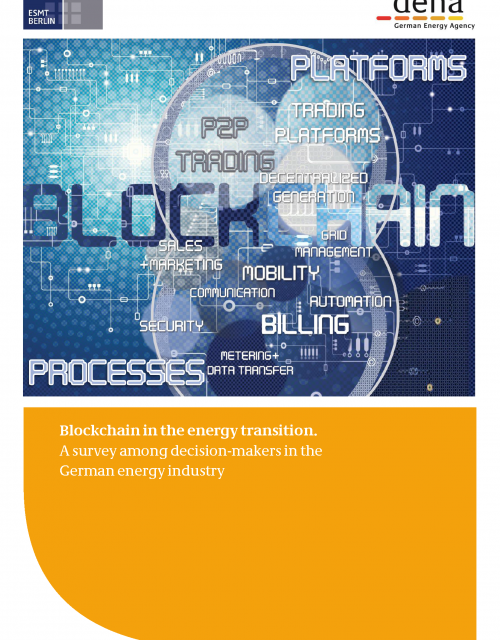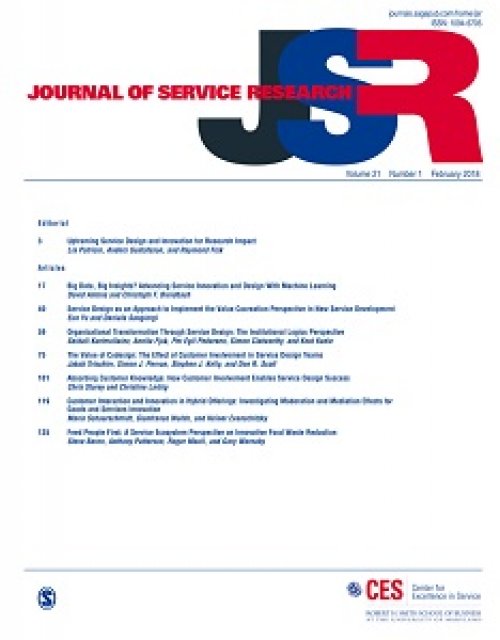Publication records
Subject(s)
Economics, politics and business environment
Keyword(s)
Adoption, quality management, standards, mimicry, contagion
Operations management scholarship has focused on reference-group adoption positively influencing focal-facility adoption; i.e., positive imitation parameters manifest due to the presence of mimicry and contagion. We instead argue that the incentive to adopt a quality-management system can be inversely related to reference-group diffusion. Our theoretical model formalizes the potential for strategic substitution and negative imitation parameters to be applicable in quality-management adoption. We compile a dataset of 2,895 facility-level observations that allows for three different industry-level reference groups; i.e., domestic industry, domestic exporters and foreign exporters. When undertaking probit estimations that do not account for appropriate fixed effects, we find positive imitation parameters which support the presence of mimicry and contagion. Yet when accounting for fixed effects, the imitation parameters turn negative in line with the presence of strategic substitution. Furthermore, the negative influence of reference-group adoption on focal-facility adoption is robust across the three reference groups.
View all ESMT Working Papers in the ESMT Working Paper Series here. ESMT Working Papers are also available via SSRN, RePEc, EconStor, and the German National Library (DNB).
Pages
37
ISSN (Print)
1866–3494
Subject(s)
Human resources management/organizational behavior
Keyword(s)
coaching, leadership
Secondary Title
The Sage handbook of coaching
Pages
139–158
ISBN
978-1-4739-1653-1
Subject(s)
Economics, politics and business environment
Keyword(s)
Collateral, repo, systemic arbitrage, central bank, collateral policy, banks, liquidity, interbank market, financial stability, financial fragmentation
JEL Code(s)
G12, G21, E42, E51, E52, E58
Central banks are under increased scrutiny because of the rapid growth in, and composition of, their balance sheets. Therefore, understanding the processes that shape these balance sheets and their consequences is crucial. We contribute by studying an extensive dataset of banks’ liquidity uptake and pledged collateral in central bank repos. We document systemic arbitrage whereby banks funnel credit risk and low-quality collateral to the central bank. Weaker banks use lower quality collateral to demand disproportionately larger amounts of central bank money (liquidity). This holds both before and after the financial crisis and may contribute to financial fragility and fragmentation.
Pages
58
Subject(s)
Economics, politics and business environment; Health and environment; Product and operations management
Keyword(s)
Blockchain, energy, energy transition
JEL Code(s)
Q41
Blockchain is a distributed, digital transaction technology that allows for securely storing data and executing smart contracts in peer-to-peer networks. In a survey among German energy executives, the German Energy Agency GmbH (dena) and the European School of Management and Technology (ESMT Berlin) have compiled their opinions, current and planned actions, and visions of the future role of Blockchain in the energy sector.
More than half of the 70 respondents has already experimented with Blockchain or plans to do so. 21 percent consider Blockchain a game changer for the energy supply industry. 60 percent of the respondents believe that a further dissemination of the Blockchain is likely, and 14 percent expect niche applications. The survey also covered potential use cases: Around half of the use cases mentioned by respondents are related to process optimization, including billing, sales and marketing, automation, metering and data transfer, mobility, communication, and grid management. The second half is linked to public and private trading platforms, in particular peer-to-peer trade, and decentralized energy generation.
Respondents urge decision-makers to speed up the process of putting Blockchain at the top of their agendas and express concerns that Germany and the European Union might be lagging behind in a global comparison. The rapid launch of prototypes should verify the functionality of the technology and attract a sufficient amount of users to rapidly reach a critical mass. They also fear that the current regulatory framework is not suited at all to accommodate Blockchain applications.
The dena / ESMT analysis reveals that the cost-cutting potential of Blockchain applications has its limitations. Especially in markets where digital solutions already exist, the technology will have to compete with fairly efficient processes. By contrast, nascent markets, such as public charging and billing transactions for electric vehicles, offer possibilities of the Blockchain to become the dominant design.
[Blockchain ist eine dezentral organisierte digitale Plattform, die sichere Datenspeicherung und Trans-aktionen in Peer-to-Peer-Netzwerken ermöglicht. Welche Auswirkungen wird Blockchain auf den Energiesektor haben?
Die Deutsche Energie-Agentur GmbH (dena) und die European School of Management and Technolo-gy (ESMTBerlin) haben Entscheidungsträger der deutschen Energiewirtschaft über ihre Einschätzungen, bestehende und geplante Aktivitäten sowie ihre Vision zum Thema Blockchain befragt. Von den rund 70 Entscheidungsträgern, die an der Umfrage teilnahmen, experimentiert bereits mehr als die Hälfte mit Anwendungen der Blockchain oder plant derartige Vorhaben. 21 Prozent sehen die Blockchain als Game-Changer für die Energieversorgung, 60 Prozent halten die weitere Verbreitung von Blockchain für wahrscheinlich und 14 Prozent erwarten Nischenanwendungen. Nach zukünftigen Anwendungsbereichen der Blockchain-Technologie befragt, fallen rund die Hälfte der Anwendungen in den Bereich öffentliche und private Handelsplattformen, insbesondere Peer-to-Peer-Handel und dezentrale Energieerzeugung, während die andere Hälfte der genannten potenziellen Anwendungen unter dem Begriff „Prozessoptimierung“ zusammengefasst werden kann, einschließlich der Themen Abrechnung, intelligente Zähler und Datenübertragung. Hier werden weiterhin Vertrieb und Marketing, Automatisierung sowie Elektromobilität, Kommunikation und Netzmanagement genannt.
Nach konkreten Handlungsfeldern befragt, empfehlen die Teilnehmerinnen und Teilnehmer der Umfrage Entscheidungsträgern aus Politik und Wirtschaft, dem Thema Blockchain größere Aufmerksamkeit zu widmen, und äußern Bedenken, dass Deutschland und die Europäische Union im globalen Vergleich ins Hintertreffen geraten könnten. Zudem bewegen sich einigen Kommentaren zufolge Blockchain-Anwendungen in einer Grauzone des derzeitigen Rechtsrahmens. Die Finanzierung von Pilotprojekten und Prototypen sollte die Möglichkeiten der Technologie bestätigen und die Einführung kommerzieller Anwendungen für den Massenmarkt beschleunigen.
Die dena-/ESMT-Analyse zeigt, dass das Kostensenkungspotenzial von Blockchain-Anwendungen für die Energiewende begrenzt ist. Insbesondere in Märkten, in denen sich bereits digitale Lösungen bewährt haben, trifft die Technologie auf starke Konkurrenzprodukte und -dienstleistungen. Im Gegen-satz dazu besteht in entstehenden Märkten die Möglichkeit, dass Blockchain in Zukunft zum dominierenden Design werden kann, beispielsweisebei öffentlichen Lade-und Abrechnungstransaktionen für Elektrofahrzeuge.]
German edition of the study: Blockchain in der Energiewende. Eine Umfrage unter Führungskräften der deutschen Energiewirtschaft.
For the press release click here.
Subject(s)
Human resources management/organizational behavior
Secondary Title
Innovating in practice: Perspectives and experiences
Pages
291–316
ISBN
978-3-319-43378-3
Subject(s)
Marketing
Keyword(s)
Service expectations, customer satisfaction, information processing, ability to evaluate, motivation to evaluate
JEL Code(s)
M310
Extant research established that customers’ expectations play an ambivalent role in the satisfaction formation process: while higher expectations are more difficult to meet and thus cause dissatisfaction, they simultaneously increase satisfaction via customers’ perceived performance owing to a placebo effect. However, to date, knowledge is scarce on the question under which conditions either the positive or negative effect of expectations on satisfaction prevails. Building on information processing theory, the authors hypothesize that an essential contingency of the indirect, placebo-based effect is the degree to which customers are able and motivated to process a service experience. Three studies with a total of over 4,000 customers in different service contexts provide strong evidence for this hypothesis. Thus, managers are well advised to provide a realistic or even understated prospect if the service context favors customers’ ability or motivation to evaluate. Conversely, if customers are neither able nor motivated to evaluate the service, increasing customer expectations represents a viable strategy to enhance satisfaction. Relatedly, if customers hold low service expectations, managers should foster customers’ ability and motivation to evaluate the service. In contrast, if service expectations are high, managers may benefit from reducing the likelihood that customers overly focus on the service performance.
With permission of SAGE Publishing
Volume
19
Journal Pages
361–379
Subject(s)
Economics, politics and business environment
Keyword(s)
Multimarket firms, entry, predation, reputation
Volume
81
Journal Pages
571–579
Subject(s)
Finance, accounting and corporate governance
Keyword(s)
Consumer loans, loan officer incentives, hard information, information manipulation
JEL Code(s)
G21
Banks have been subject to a wave of investigations regarding fraudulent behavior. Much of the discussion centers on manipulation of hard information by employees down the line, who missell mortgages due to flawed debt-to-income ratios or manipulate LIBOR and FX rates. Despite these prominent cases, little is known in the academic literature as to whether and how manipulation of hard information is affected by incentives of these employees, and if anything there is increasing reliance on quantitative, hard information based models for regulating banks. In this paper, we fill this gap by analyzing almost a quarter million of retail loan applications. We show that loan officer incentives significantly skew ratings even in settings where ratings are computed using hard information only. These incentives have a first-order effect on bank profitability. Our results suggest that ratings are subject to the Lucas critique: Incentives influence the hard information reported by loan officers and thus change the link between hard information and default probabilities.
Pages
53
Subject(s)
Human resources management/organizational behavior
Keyword(s)
Biography, psychodynamic approach, management science, clinical paradigm, universal motivational drivers, leadership development, group coaching, legacy
The full text of the working paper is available at SSRN.
Pages
35
Subject(s)
Information technology and systems; Technology, R&D management
Keyword(s)
Key operational investments
JEL Code(s)
D80
How does your organization manage the money it spends on digital? One surprising finding of my research is that most do not distinguish between different types of digital investments, treating all in a similar way. This situation exists because, believe it or not, a lot of organizations lack any mechanisms to help them actively manage the evaluation, selection, monitoring, and adjustment of digital investments to achieve clearly defined business results while meeting clear risk and return expectations.
ISSN (Print)
0017-8012

